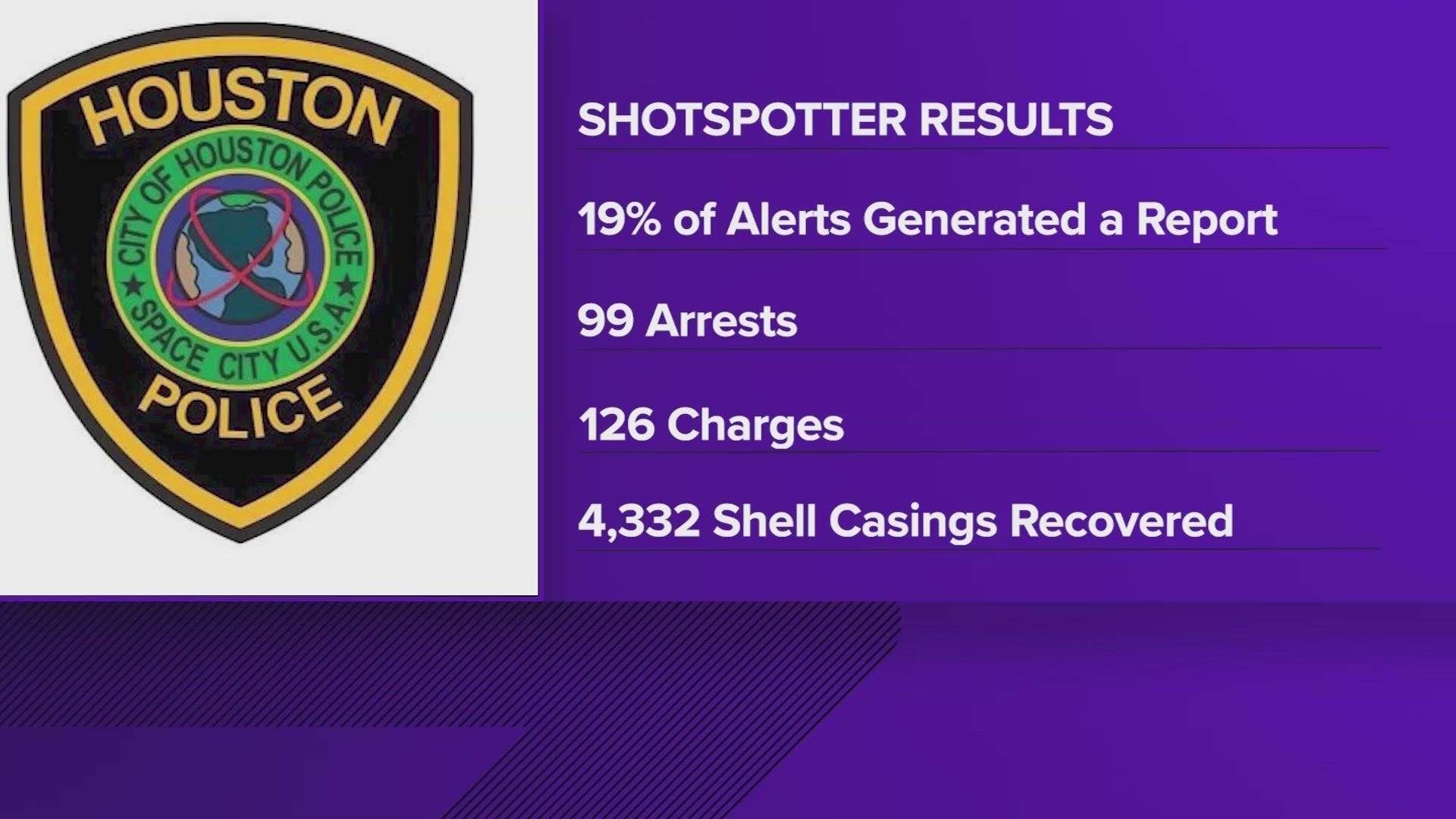HOUSTON — More than 150 detectors are spread out across southeast Houston to pick up a loud noise that could be gunfire. The detectors triangulate its location before sending an audio clip to a technician at ShotSpotter headquarters in California.
Within 30 seconds, that person determines whether the noise is a gunshot and if so, they alert police.
“We have got a much more accurate picture now in those communities where this system exists of what is going on gun violence-wise and gunfire-wise,” said Houston Police Department Assistant Chief Milton Martin.
Martin said the ShotSpotter program has alerted officers to more than 5,000 incidents of gunfire over a more than two-year-long period.
The southeast Houston area was chosen for the pilot program based on available calls for service for gunfire and gun crime.
“We have had stories from people who live in the area of people having their children sleep in bathtubs because they’re worried that they’re gonna be hit by a stray bullet because they hear gunfire all the time," Martin told council members Thursday as he updated them on the results from the program.
The numbers reported run from Dec. 28, 2020, to Feb. 12, 2023. They cover a five-square-mile area of southeast Houston, with locations kept undisclosed for security reasons.
In addition to greatly speeding up officer response times to gunfire, Martin noted more than 90 percent of gunshots in the area were never reported by citizens.
The program has generated 5,450 gunfire alerts, with 1,043, or 19% of those generating offense reports. The program has led to 99 arrests, 126 charges and the recovery of 4,332 shell casings.
Most of those were entered into a national database.
“Let’s say the casings are being discovered in one location,” said Council Member Abbie Kamin, who chairs the public safety committee. “They can be tied to an aggravated assault, a robbery, even a homicide in another location. That’s allowing investigators to follow the breadcrumbs, so to speak, to get closer to that identification.”
However, some people don’t believe these results justify the city’s five-year, $3.5 million contract with ShotSpotter.
“Move that (money) and put that into programs that actually reduce gun violence, like housing and health care and debt relief,” said Christopher Rivera of Texas Civil Rights Project.
“In addition to the wild cost ineffectiveness of the program, the program is greenlighting government surveillance in communities,” said Saba Blanding.
“What can we demonstrate on real outcomes on the problem that we’re supposed to be solving?” asked Jason Oliver.
Martin said he believes the program’s been worth it and that some of the biggest benefits can’t be measured.
“Talking to community members and seeing the confidence that they have now that there is something we can do about gunfire,” he said. “It was always a frustration.”
ShotSpotter detectors also cover 5 square miles on the city’s north side. Martin said his team is still tabulating those numbers.
Kamin says Houstonians in other parts of the city are asking for the technology, but there are no current plans to expand it.

